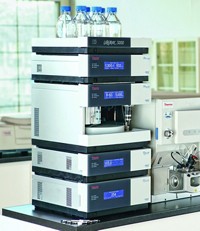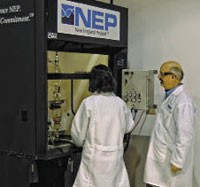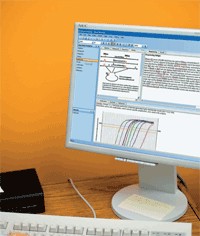Advertisement
Grab your lab coat. Let's get started
Welcome!
Welcome!
Create an account below to get 6 C&EN articles per month, receive newsletters and more - all free.
It seems this is your first time logging in online. Please enter the following information to continue.
As an ACS member you automatically get access to this site. All we need is few more details to create your reading experience.
Not you? Sign in with a different account.
Not you? Sign in with a different account.
ERROR 1
ERROR 1
ERROR 2
ERROR 2
ERROR 2
ERROR 2
ERROR 2
Password and Confirm password must match.
If you have an ACS member number, please enter it here so we can link this account to your membership. (optional)
ERROR 2
ACS values your privacy. By submitting your information, you are gaining access to C&EN and subscribing to our weekly newsletter. We use the information you provide to make your reading experience better, and we will never sell your data to third party members.
Biological Chemistry
Inside Instrumentation
Technology and Business news for the laboratory world
by Inside Instrumentation is written by Celia H. Arnaud and Ann M. Thayer. Contact them via e-mail to instrumentation@acs.org.
October 29, 2007
| A version of this story appeared in
Volume 85, Issue 44
Thermo acquires NanoDrop Technologies
Thermo Fisher Scientific has acquired NanoDrop Technologies, based in Wilmington, Del., for an unspecified amount. With annual revenues of about $35 million, NanoDrop makes ultraviolet-visible spectrophotometers that require very small samples. "Growing demand from our laboratory customers to accelerate sample preparation time is now compounded by the need to work with smaller sample sizes," says Marijn E. Dekkers, Thermo president and chief executive officer. NanoDrop's technology allows for microsized samples that don't require dilution, which can help preserve valuable samples, such as DNA and proteins.
Sequenom Licenses Nanopore Technology
On a quest to reduce the cost of DNA sequencing, San Diego-based Sequenom plans to develop technology that uses simultaneous optical detection of multiple nanopores to sequence individual DNA molecules. The company acquired the rights to the technology from Harvard University. "Near term, we expect this nanopore technology to deliver large-scale genotyping solutions, and long term, we believe it has the potential to provide a commercially viable, rapid, sub-thousand-dollar human-genome-sequencing solution," says Sequenom CEO Harry Stylli. Inventor Amit Meller, now a professor of biomedical engineering at Boston University, will collaborate with Sequenom to develop the technology, in which fluorescently labeled DNA molecules are threaded through solid-state nanopores and each base is identified by its fluorescent tag.
Wyatt Offers Calypso System
Wyatt Technology, Santa Barbara, Calif., is offering the Calypso automated protein association and aggregation system. The system performs rapid, quantitative, nondestructive characterization of protein-protein interactions in native solution, using composition-gradient multiangle light scattering. Although the unit's usual stop-flow mode gives high sensitivity with minimal sample consumption, a new continuous mode improves the data obtainable with imperfect samples. It does so by moving any large particulates through the system rapidly, thereby allowing the instrument to recognize and remove noise and data artifacts. Continuous flow also reduces buildup of sticky samples on detector surfaces.
Thalesnano Debuts H-Cube Midi
ThalesNano, which has headquarters in Budapest, has launched the H-Cube Midi flow reactor for conducting hydrogenation reactions in process development. Its design based on technology similar to that the company uses in its bench-scale H-Cube reactors, the H-Cube Midi has an increased capacity of up to kilograms per day. Customers wanted a larger system for scaling up reactions, says ThalesNano CEO Laszlo Urge. According to the company, H-Cube reactions can now be optimized and transitioned from the milligram to the kilogram scale within a day.

Devices Target Drug Testing
(1) Researchers at the University of Maryland, College Park, and the University of Maryland Biotechnology Institute have received a $2 million grant to build microfabricated devices that they hope will revolutionize drug testing and replace animal tests with assays using human cells and proteins. "The current testing system, involving mice and other animals, doesn't reflect the human body," says team leader William Bentley, a professor of bioengineering. Because the human components will be added to devices after manufacture, the same device can be used for a variety of tests. Bentley and his collaborators are focusing on using their device to test drugs that block quorum sensing, a phenomenon that leads to microbial infections.
WITec Offers Ultrafast Raman
The German company WITec has announced an ultrafast imaging option for its alpha300 R Confocal Raman Microscope. Because a single confocal Raman image can be acquired in just 1.7 milliseconds, the time required to build an image of an entire sample—typicallytens of thousands of spectra—is reduced to only a few minutes. The key to the fast acquisition is the combination of an electronmultiplying charge-coupled device detector with high-throughput optics. The company reports that it can acquire a confocal Raman image of the polymer poly(methyl methacrylate) (red) and a contaminating alkane layer (green) on glass (blue) in less than six minutes.
Inside Instrumentation is written by Celia H. Arnaud and Ann M. Thayer. Contact them via e-mail to instrumentation@acs.org.





Join the conversation
Contact the reporter
Submit a Letter to the Editor for publication
Engage with us on Twitter